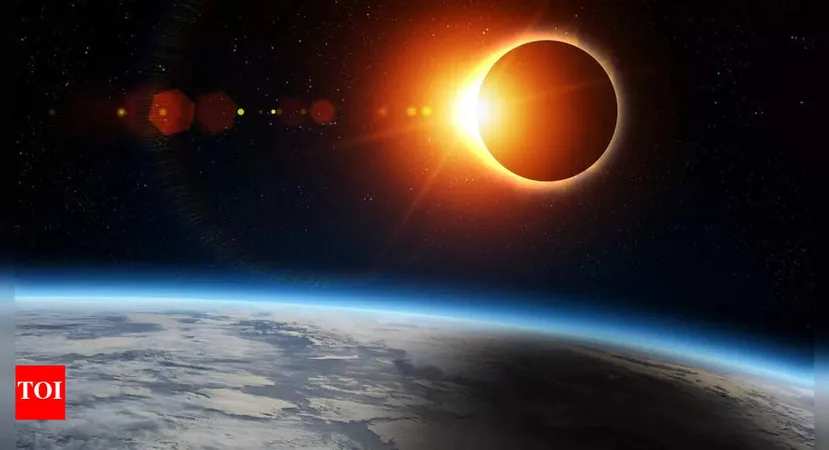
Unveiling the Skies: The 74-Minute Total Solar Eclipse Observed by Concorde 001
2025-09-02
Author: Ken Lee
A Historic Achievement in Astronomy
On June 30, 1973, a groundbreaking feat unfolded over the Sahara Desert: scientists aboard the Concorde 001 captured a staggering 74-minute total solar eclipse—the longest ever recorded. Through a dazzling blend of innovative technology and meticulous planning, this mission redefined astronomical observation, pushing the boundaries of what we thought possible.
Revolutionary Technology Takes to the Skies
The Concorde 001, a cutting-edge supersonic jet capable of flying at over 2,500 km/h, transformed into a high-altitude observatory. With specially designed observation ports and scientific instruments, the aircraft soared above 16,000 meters, evading atmospheric disturbances and turbulence. By synchronizing its speed with the Moon's shadow, the team managed to extend the eclipse's duration far beyond the 7 minutes available from the ground.
Understanding the Marvels of a Total Solar Eclipse
Total solar eclipses are rare celestial events where the Moon entirely blocks the Sun, creating moments of darkness known as totality. These fleeting instances depend on several factors such as alignment of the Earth, Moon, and Sun, as well as the observer's location. In 1973, the eclipse presented an extraordinary chance to explore totality's limits—all thanks to a strategic aerial approach that stretched this unique experience.
Precision and Expertise: The Key to Success
Achieving extended totality required surgical precision. Even a two-minute delay could cut the eclipse viewing time significantly. Scientists meticulously focused on critical phases of the event, flying at supersonic speeds to stay within the Moon's shadow longer than any ground-based observer could. This intricate dance of timing and navigation combined both aviation and astronomical expertise.
Probing the Solar Corona
The solar corona, the Sun's outer atmosphere, is a fascinating subject that is only visible during total eclipses. During those remarkable 74 minutes, five scientific teams conducted parallel studies, capturing high-resolution images and examining the dynamic features of the corona and chromosphere. This unprecedented observation period yielded insights that were previously unattainable, significantly advancing our understanding of solar physics.
Lasting Impact on Eclipse Research
The legacy of the Concorde mission continues to impact modern solar research. Today, NASA employs WB-57 aircraft for stratospheric eclipse observations, while the European Space Agency is pioneering innovative methods to create artificial eclipses with coordinated satellites. By demonstrating that supersonic flight could revolutionize eclipse studies, the Concorde experiment laid the groundwork for future exploration and enhanced our perception of the cosmos.
The 74-minute total solar eclipse experienced at supersonic speeds inspired generations of astronomers and engineers, marking an exhilarating chapter in the story of human ingenuity and the quest to unlock the universe's secrets.


 Brasil (PT)
Brasil (PT)
 Canada (EN)
Canada (EN)
 Chile (ES)
Chile (ES)
 Česko (CS)
Česko (CS)
 대한민국 (KO)
대한민국 (KO)
 España (ES)
España (ES)
 France (FR)
France (FR)
 Hong Kong (EN)
Hong Kong (EN)
 Italia (IT)
Italia (IT)
 日本 (JA)
日本 (JA)
 Magyarország (HU)
Magyarország (HU)
 Norge (NO)
Norge (NO)
 Polska (PL)
Polska (PL)
 Schweiz (DE)
Schweiz (DE)
 Singapore (EN)
Singapore (EN)
 Sverige (SV)
Sverige (SV)
 Suomi (FI)
Suomi (FI)
 Türkiye (TR)
Türkiye (TR)
 الإمارات العربية المتحدة (AR)
الإمارات العربية المتحدة (AR)